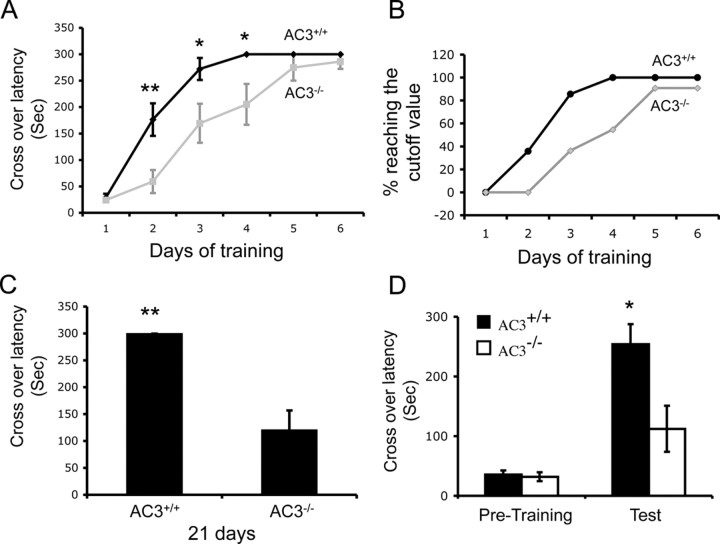Figure 3.
AC3−/− mice show impaired TDPA learning and memory. A, AC3−/− mice (n = 11) learned TDPA slower than AC3+/+ mice (n = 14). The crossover latency for AC3+/+ and AC3−/− mice during training for TDPA differed significantly on day 2 (p = 0.005), day 3 (p = 0.028), and day 4 (p = 0.034) of training. **p < 0.01; *p < 0.05. Data are represented as means ± SEM. B, The percentage of AC3−/− mice (n = 11) reaching the cutoff value (300 s) for crossover latency during the course of TDPA training was lower than AC3+/+ mice (n = 14). C, Long-term memory for TDPA is impaired in AC3−/− mice. Long-term memory was tested 21 d after animals reached the cutoff value (300 s) for crossover latency during TDPA training. AC3−/− mice (n = 10) showed poorer retention of memory for TDPA training than AC3+/+ mice (n = 14) (p = 0.001). **p < 0.01. Data are represented as means ± SEM. D, Short-term memory of AC3−/− mice for TDPA training is impaired. The crossover latency (in seconds) of animals entering the dark chamber was monitored 10 min after a single training session for TDPA. There were significant difference between AC3+/+ mice (n = 8) and AC3−/− mice (n = 9) in crossover latency (in seconds) during the memory retention test (p = 0.014). *p < 0.05. Data are represented as means ± SEM.

